La Calçotada
La Calçotada

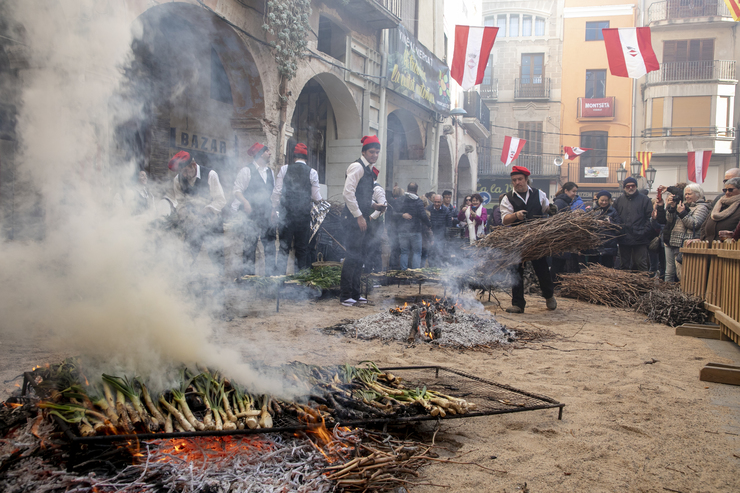
Alt Camp is the land of the calçotada; as well as being its origin and the place in the world where the best calçotada is made. As tradition dictates, a good calçotada must have the Sierra de Miramar as a backdrop; a Valls country house as the setting; and the city of Valls with its high bell tower as its base.
The calçotada season runs from November to April.
Valls, the origin of the calçotada
The origin and subsequent process of expansion of the calçotada is a genuine phenomenon from Valls and even has a date of birth and the author’s full name.
It all started at the end of the 19th century, when a Valls farmer, known as “Chat de Benaiges”, ate two grilled white onions. The farmer harvested the crickets emerging from the onions, cut the roots and roasted them on the flame; then he removed the blackened layer from the fire and ate the white part seasoned with oil, vinegar and salt. He liked the taste so much - much milder than that of a normal onion - that he decided to experiment with that crop until he established the procedure we know today for growing calçots: planting white onion seeds during the last months of the year, plucking them once germinated and grown, keeping them for a season and replanting them, but this time only half covered with soil. The name 'calçot' refers to the fact that, as it grows, the plant has to be 'wedged', that is to say, surrounded by earth, until the moment of harvesting, usually during the winter months.
From the first third of the 20th century, the calçotada became a regular meal for many families from Valle del Este. On feast days, it was typical to go to the farmhouse to cook calçots with the living flame of the redolta, vine branch timber. The calçotada expanded outside its geographical base in the late 1940s, when the Valle de Penya Artística de l'Olla began to celebrate calçotades, inviting people from the artistic and cultural world of Barcelona. It is known, for example, that the magazine 'Destino' went on to organise several express trips to celebrate calçotades. Very soon, restaurateurs in the area began to serve calçotades and promote them.
The authentic calçotada
The Calçotada is much more than great food. It is a pretext to gather outdoors and celebrate the surroundings with family and friends. This centuries-old gastronomic tradition features calçots, which are arranged on the grills, with the fire well alive, and eaten with a typical sauce made of almonds, hazelnuts, roast tomatoes, dried red peppers, garlic, oil, vinegar, parsley and salt.
Peel the calçot, mix it with the sauce and lift it up high, as tradition dictates, then put it in your mouth and savour. Then, using the coals, the meat, sausages, black pudding and artichokes are cooked to the taste of each diner, accompanied by a good wine from the Valls Cooperativa Agrícola or Tarragona DO winemakers.
The party traditionally ends with cava and cakes.
Calçots and the calçotades season
Like many other traditions, the Calçotada has its optimal season. The best time to enjoy a good calçotada is in the winter, especially from November to April.
A prestigious tourist industry has been created around the calçotada, which knows how to satisfy the expectations of the visitor. Restaurateurs from Valls and the region offer an authentic calçotada and put great effort into preserving the essence of this gastronomic tradition.
In 1995, the Generalitat de Catalunya (government) granted the quality designation “Calçot de Valls”, and in 1996 the Regulatory Council was established, currently giving protected geographical protection, IGP, to “Calçot de Valls”. The geographical scope of this denomination includes the regions of Alt Camp, Baix Camp, Tarragonès and Baix Penedès.
The Gran Festa de la Calçotada
On Sunday, January 24, 2021, Valls will host the next GRAN FESTA DE LA CALÇOTADA FESTIVAL promoting the calçot and filling the streets and squares of Valls with typical hustle and bustle. The day will feature a varied programme of traditional, festive events related to the calçot: street parades, calçot grilling demonstrations, calçot growing competitions, calçotada sauce making and eating calçots and other tastings.
Come to Valls for the GRAN FESTA DE LA CALÇOTADA, one of the typical festivals in Catalunya, and also throughout the Calçot season. Until well into April, you can come any day to the Valls area and taste the authentic calçotada. Everyone is welcome.
Notícies relacionades
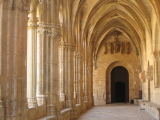





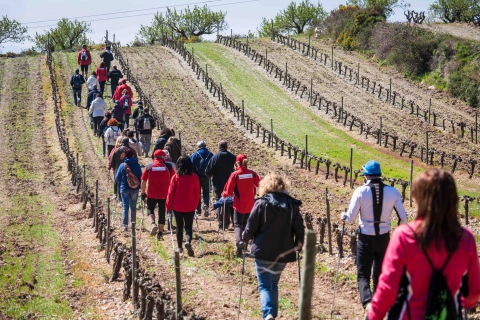

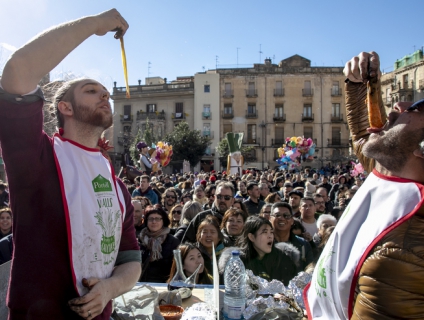
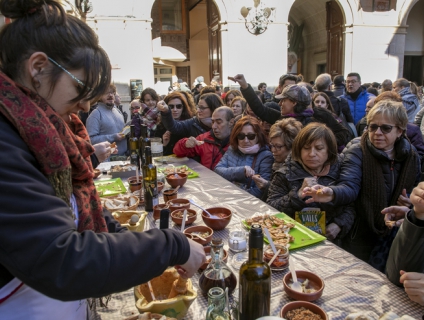


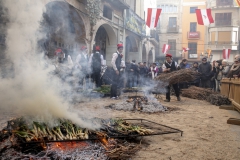



 Entorn Web · Àrea de Coneixement i Qualitat
Entorn Web · Àrea de Coneixement i Qualitat Oficina de Gestió de Turisme de l’Alt Camp
Oficina de Gestió de Turisme de l’Alt Camp






 turismealtcamp
turismealtcamp turismealtcamp
turismealtcamp turismealtcamp
turismealtcamp